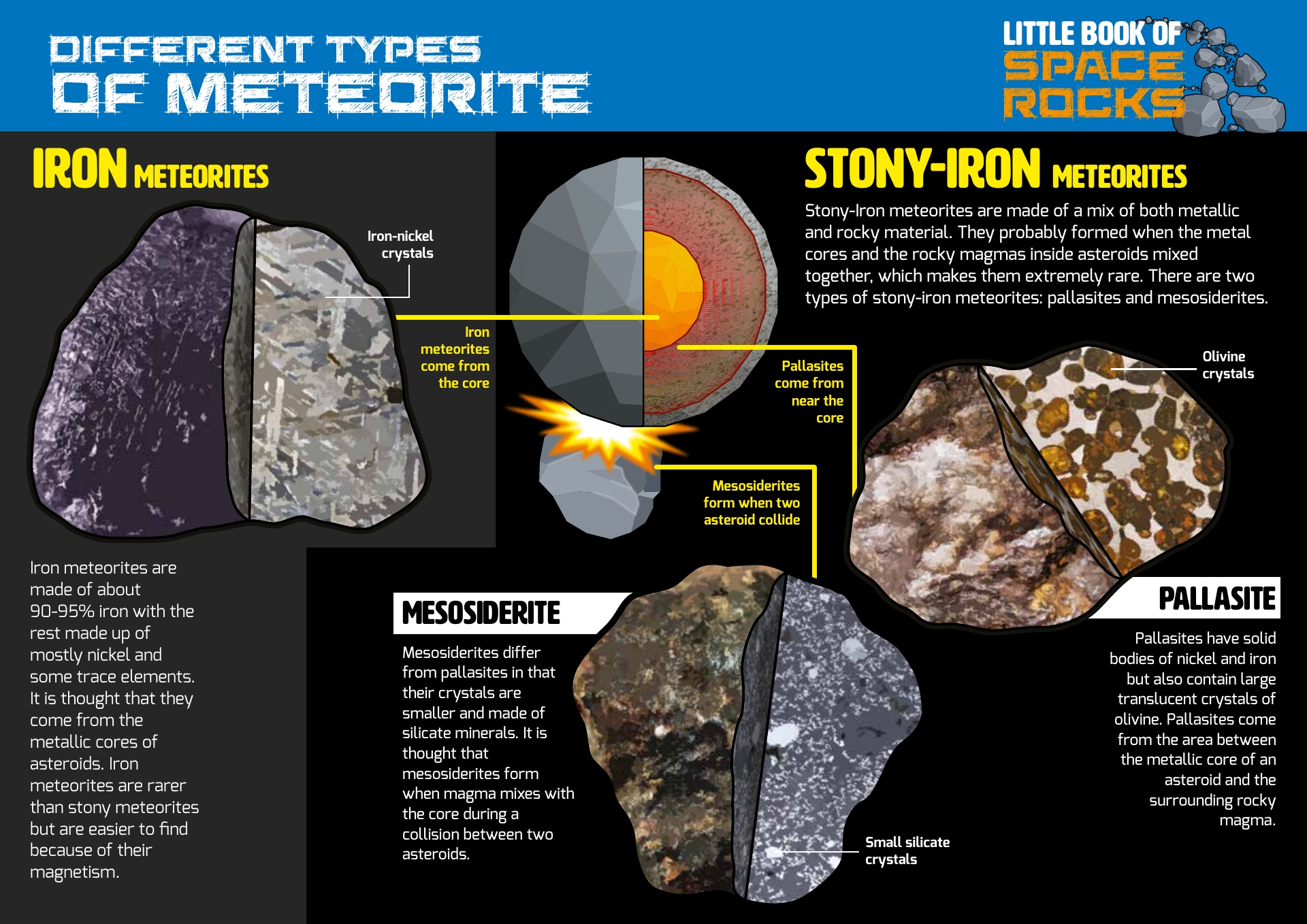
Week 7-8. Composition of Meteorites
A meteorite is a solid piece of debris from an object, such as a comet, asteroid, or meteoroid that originated in outer space and survived its passage through the atmosphere to reach the surface of a planet or moon.
When the original object enters the atmosphere, various factors such as friction, pressure, and chemical interactions with the atmospheric gases cause it to heat up and radiate energy. It then becomes a meteor and forms a fireball, also known as a shooting star or falling star; astronomers call the brightest examples "bolides".
Once it settles on the larger body's surface, the meteor becomes a meteorite.
Meteorites vary greatly in size. For geologists, a bolide is a meteorite large enough to create an impact crater.
Meteorites that are recovered after being observed as they transit the atmosphere and impact the Earth are called meteorite falls. All others are known as meteorite finds.
Classification:
Meteorites have traditionally been divided into three broad categories:
1. Stony Meteorites that are rocks, mainly composed of silicate minerals; iron meteorites that are largely composed of metallic iron-nickel; and stony-iron meteorites that contain large amounts of both metallic and rocky material. Modern classification schemes divide meteorites into groups according to their structure, chemical and isotopic composition and mineralogy. Meteorites smaller than 2 mm are classified as micrometeorites. Extraterrestrial meteorites are such objects that have impacted other celestial bodies, whether or not they have passed through an atmosphere. They have been found on the Moon and Mars.
Types
Most meteorites are stony meteorites, classed as chondrites and achondrites. Only about 6% of meteorites are iron meteorites or a blend of rock and metal, the stony-iron meteorites.
About 86% of the meteorites are chondrites, which are named for the small, round particles they contain. These particles, or chondrules, are composed mostly of silicate minerals that appear to have been melted while they were free-floating objects in space. Certain types of chondrites also contain small amounts of organic matter, including amino acids, and presolar grains. Chondrites are typically about 4.55 billion years old and are thought to represent material from the asteroid belt that never coalesced into large bodies. Like comets, chondritic asteroids are some of the oldest and most primitive materials in the solar system. Chondrites are often considered to be "the building blocks of the planets".
2. Iron Meteorites: About 5% of meteorites that have been seen to fall are iron meteorites composed of iron-nickel alloys, such as kamacite and/or taenite. Most iron meteorites are thought to come from the cores of planetesimals that were once molten. As with the Earth, the denser metal separated from silicate material and sank toward the center of the planetesimal, forming its core. After the planetesimal solidified, it broke up in a collision with another planetesimal. Due to the low abundance of iron meteorites in collection areas such as Antarctica, where most of the meteoric material that has fallen can be recovered, it is possible that the percentage of iron-meteorite falls is lower than 5%. This would be explained by a recovery bias; laypeople are more likely to notice and recover solid masses of metal than most other meteorite types. The abundance of iron meteorites relative to total Antarctic finds is 0.4%.
3. Stony-iron meteorites or siderolites: are meteorites that consist of nearly equal parts of meteoric iron and silicates. This distinguishes them from the stony meteorites, that are mostly silicates, and the iron meteorites, that are mostly meteoric iron. Stony-iron meteorites are all differentiated, meaning that they show signs of alteration. They are therefore achondrites. The stony-irons are divided into mesosiderites and pallasites. Pallasites have a matrix of meteoric iron with embedded silicates (most of it olivine). Mesosiderites are breccias which show signs of metamorphism.



